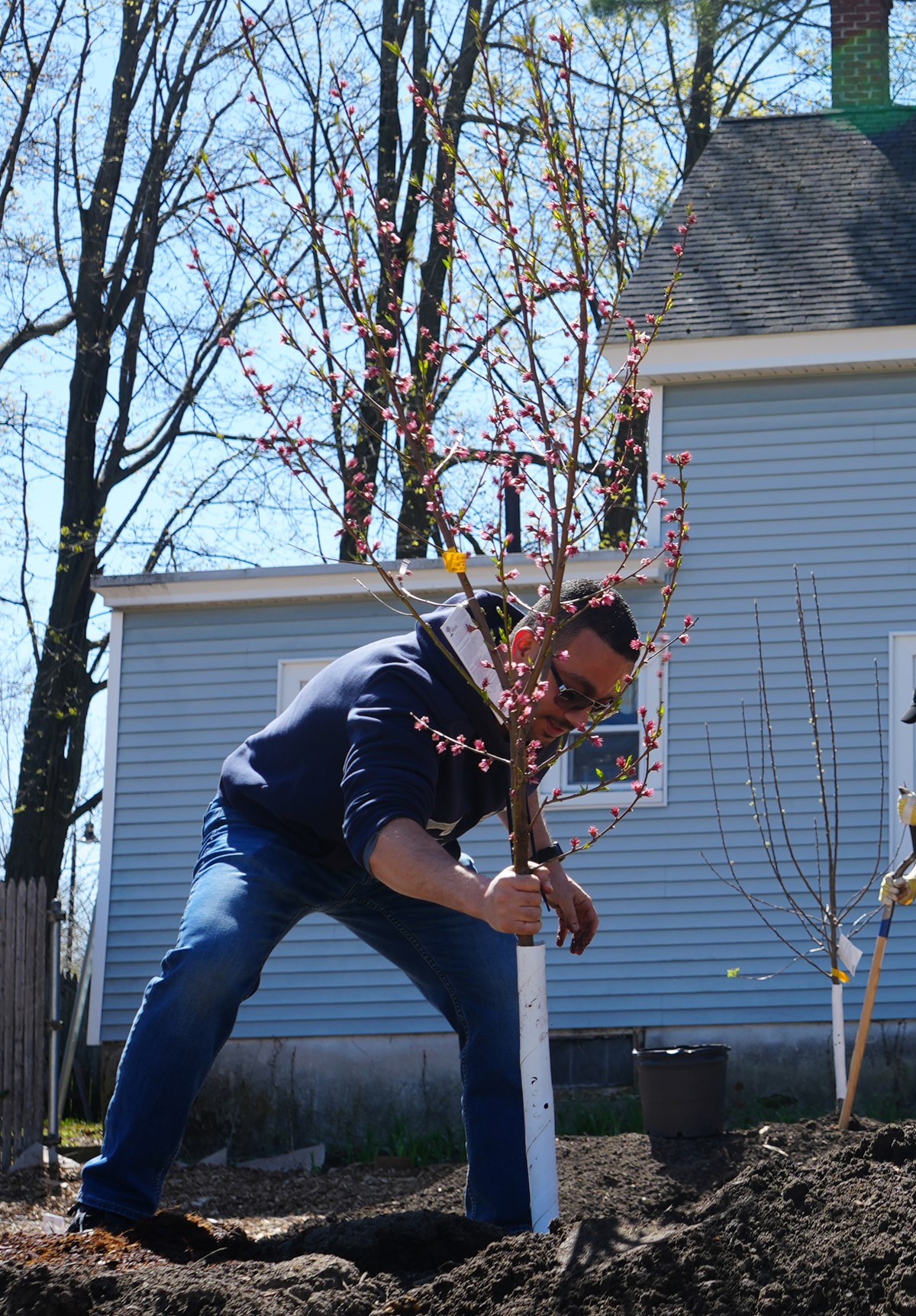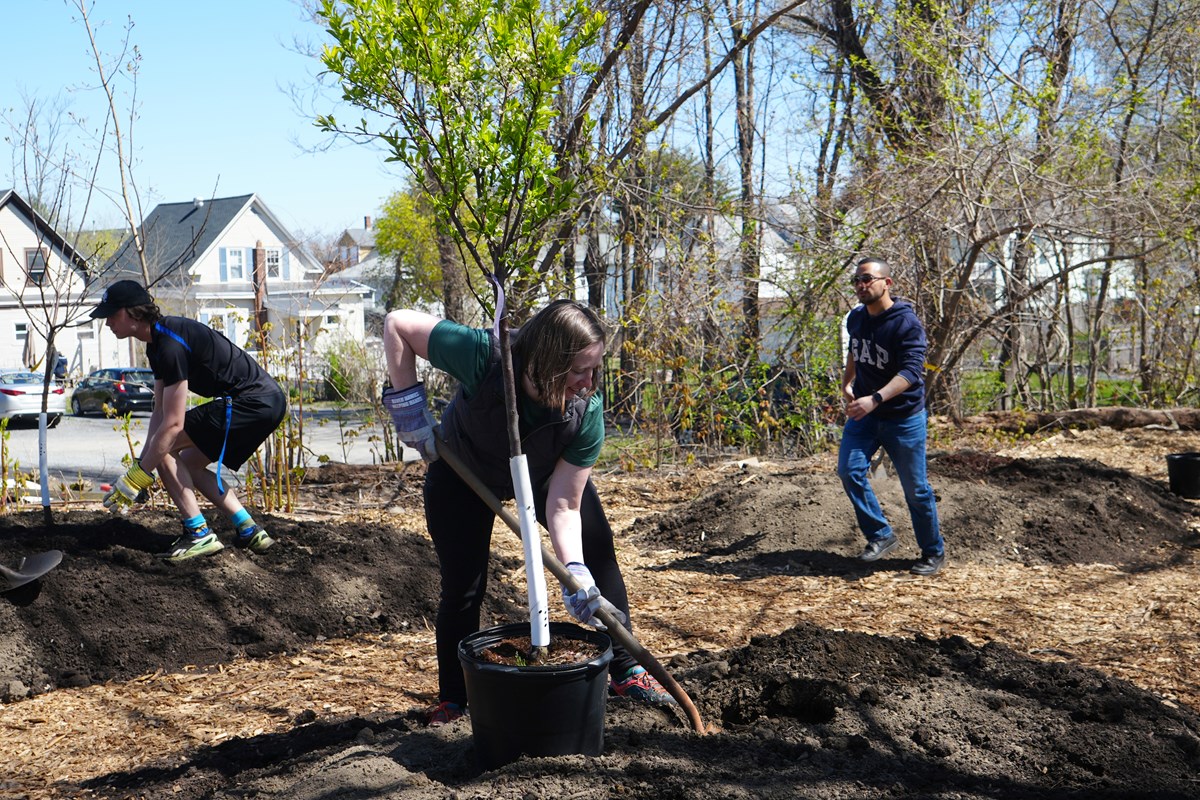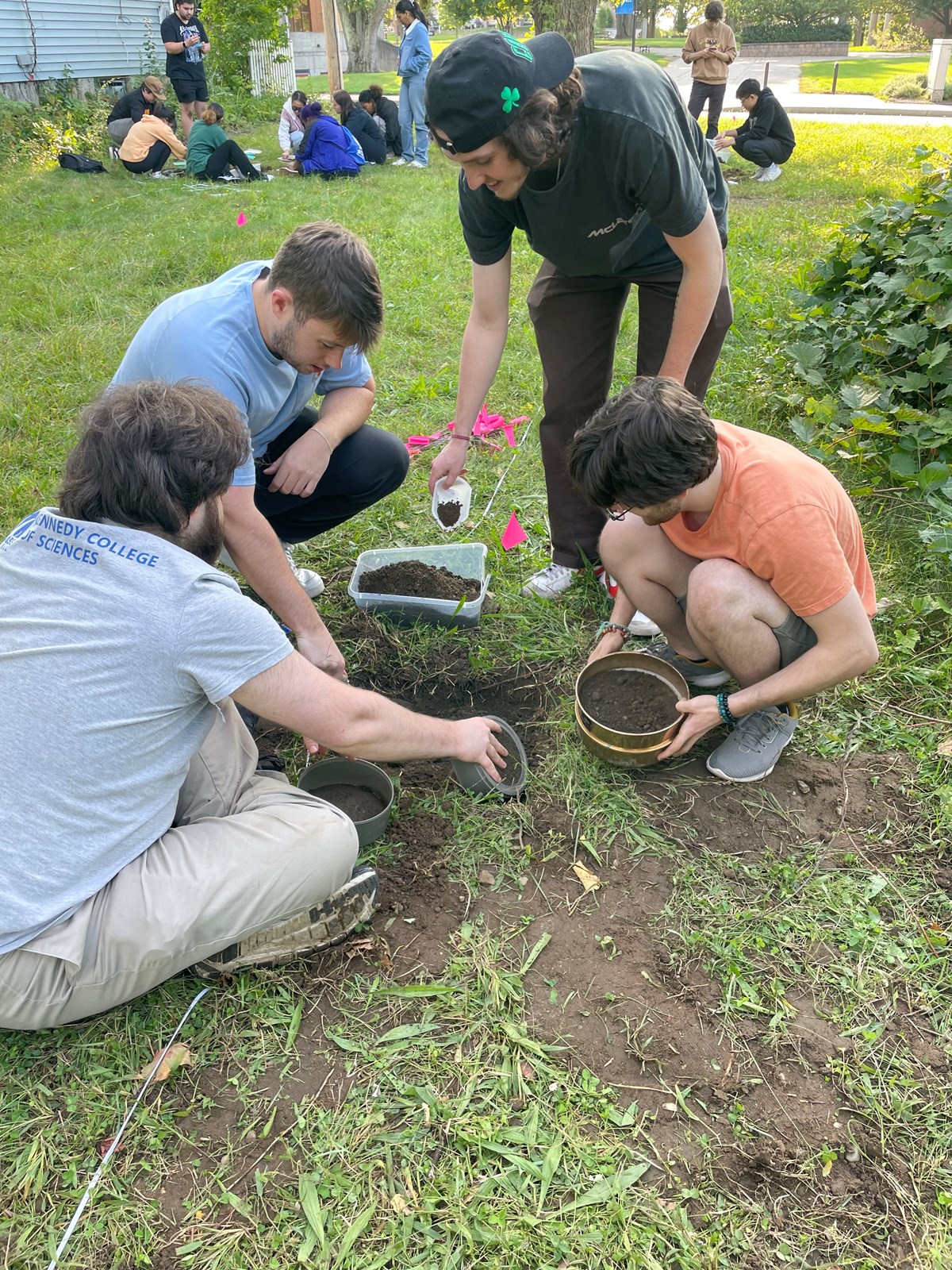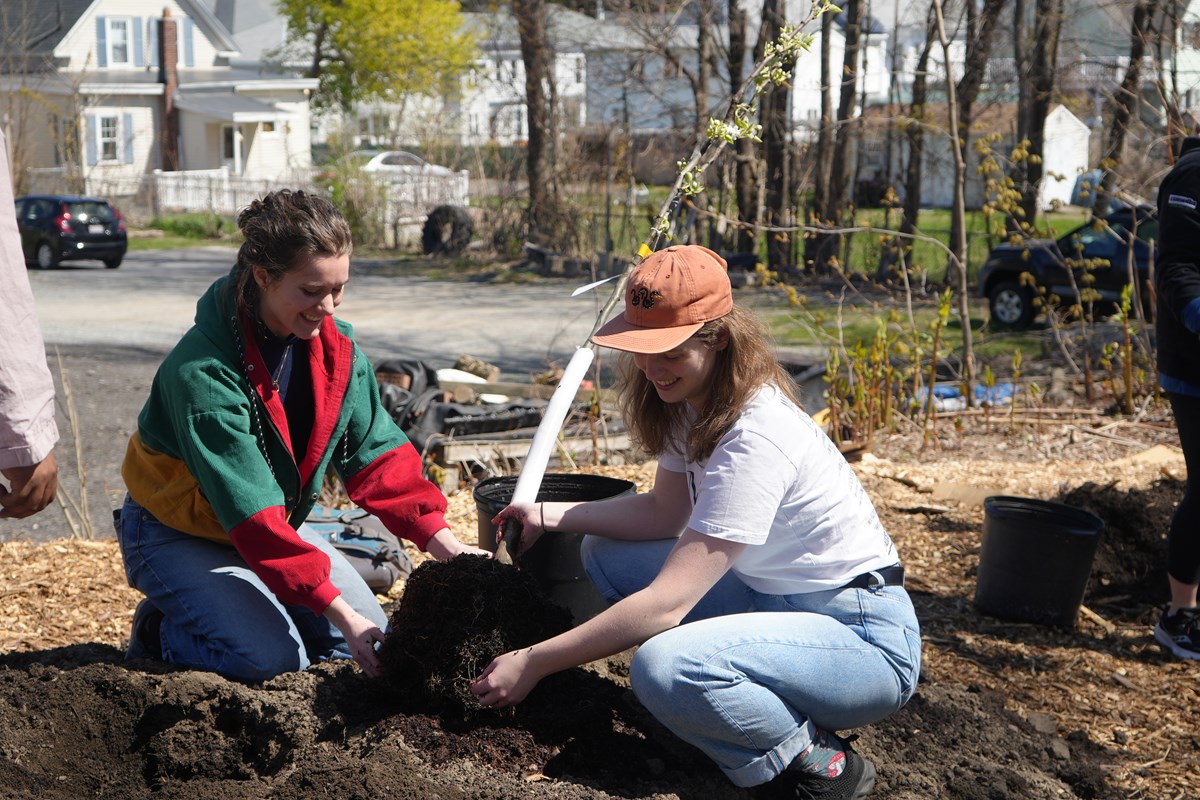 Image by Brooke Coupal
Image by Brooke Coupal
What was once a vacant, roughly 14,700-square-foot lot bordered by homes on South Campus is now blossoming into a vibrant food forest, thanks to the vision of mechanical engineering Ph.D. student Alana Smith ’22.
“We’re transforming it into something useful and beautiful for our community,” says Smith of the site, located at 46 Wilder St.
The idea for a food forest, which is composed of edible plants designed to mimic a natural forest system, came to Smith as she witnessed supply chain issues during the COVID-19 pandemic. Then an undergraduate student at UMass Lowell, Smith looked into sustainable food systems and discovered food forests, which provide high food yields on less land.
She submitted her food forest idea to the Rist Institute for Sustainability and Energy, which awarded the project $7,500 from the Sustainability Encouragement & Enrichment Development (S.E.E.D.) Fund. On Arbor Day of this year, Smith joined members of the community to plant the first fruit trees in the food forest, which included pawpaw and cherry trees.
“It will be exciting to come back and see the fruit on the trees that we planted,” she says. “I’m happy we’re improving the use of the site and creating a lasting place for people.”
Living Laboratory
To be considered a food forest, the site must consist of seven layers – tall trees that create a canopy, smaller trees that act as a subcanopy, shrubs, herbaceous plants such as vegetables and flowers, soil, roots and vines. Last year, UMass Lowell became a certified arboretum, which is expanding as more plants are added to the food forest.
 Image by Brooke Coupal
Image by Brooke Coupal
“We’re growing species across campus, which is what you want – a diverse tree inventory,” says Grounds Operations Manager Kevin Block, who helped with the plant selection for the food forest. “Between shrubs and trees, we have about 150 species across campus.”
An arboretum is a place where trees and other plants are cultivated for scientific and educational purposes, which is exactly how Smith intends the food forest to be used.
“It’s a living laboratory,” the Sandown, New Hampshire, native says. “We have this great space for research.”
Smith is developing a life cycle assessment framework that compares the food forest to a traditional lawn. A life cycle assessment is a holistic approach to evaluating the environmental, economic and social impacts of a system throughout its entire existence; however, it lacks the inclusion of most ecosystem functions, such as carbon reuse and urban heat island mitigation. Smith plans to change that with her research.
For the project, Smith is tapping into the life cycle assessment expertise of her Ph.D. advisor Jasmina Burek, an assistant professor in the Department of Mechanical and Industrial Engineering. She is also enlisting the help of Joy Winbourne, an assistant professor in the Department of Environmental, Earth and Atmospheric Sciences, to assist with ecosystem-related measurements, such as air and soil temperatures, carbon cycling and biodiversity estimates.
“We’re trying to quantify all these ecosystem services, and there’s a number of them that we’re building a sensor network for to take measurements,” Winbourne says.
 Image by Brooke Coupal
Image by Brooke Coupal
Mechanical and Industrial Engineering Asst. Prof. Alessandro Sabato is also assisting with the research by using a drone embedded with a thermal camera to evaluate the thermal properties of the food forest. Through thermal images, the researchers can quantify how the food forest reduces urban heat islands. Mechanical engineering Ph.D. candidate Nitin Nagesh Kulkarni, who is a drone pilot for Sabato’s lab, is helping with data collection.
“(The food forest) is a terrific opportunity for new research avenues,” Sabato says. “It shows that collaborations between faculty with different expertise can create innovative ways to tackle societal challenges.”
Beyond the Classroom
Professors are bringing their classes to the food forest for hands-on experience.
Biological Sciences Asst. Teaching Prof. Alison Hamilton took students in her Principles of Ecology and Field Techniques in Ecology courses to the site to evaluate biodiversity in plants and invertebrates.
“The preliminary data will allow us to examine how the evolution of the site from a vacant lot to a food forest affects the biodiversity of species living there,” she says.
Burek intends to work with engineering students as part of a capstone project focused on irrigation system design for the space.
Marie Frank, an art and design associate professor and the architectural studies program director, has brought students from her Architectural Utopias, Modern Architecture and History of Architecture courses to the food forest. Smith has talked to Frank’s classes about food forests and design plans.
 Image by Alison Hamilton
Image by Alison Hamilton
Before the food forest was established, Winbourne brought her Soil Science class to the site to evaluate the soils. Future classes will monitor changes in the soils as the food forest develops. She also plans for students in her biogeochemistry class to use data collected from the space to generate full carbon budgets, which show the movement of carbon in and out of the food forest over time.
“As an instructor, I am excited to bring students to the food forest,” Winbourne says.
Community Space
Beyond research and academics, the food forest serves as a place where people can unwind and be in touch with nature.
“It’s nice to get out of the lab, put my hands in the dirt and get some fresh air,” said Earth system science Ph.D. student Mika Bighin as she helped plant fruit trees. “It’s a nice place to get together, hang out and relax.”
Students also helped prepare the space before the first plantings. They collected cardboard from UMass Lowell Dining to be placed at the site to help improve the soil quality. Yandi's Tree Service in Lowell donated the mulch, and Casella Waste Systems provided the loam and compost, some of which came from UMass Lowell Dining scraps.
Smith spoke to neighboring Lowell residents about the project and looks forward to them checking out the site.
“They were excited about this coming to campus,” says Smith, who plans on hosting community events at the space.
 Image by Brooke Coupal
Image by Brooke Coupal
In addition to the plants and trees, people will be able to enjoy a labyrinth, or a contemplative maze, within the food forest. Hannah Monbleau, assistant director of the Office of Student Life and Well-being, received $7,500 to create the labyrinth garden from the Rist Institute for Sustainability and Energy’s S.E.E.D. Fund.
“Well-being is actually the relationship between the health of the environment around us and our own personal health,” Monbleau says. “By taking care of our own health by practicing mindfulness in the labyrinth garden, we are contributing to our own personal well-being while the food forest simultaneously contributes to the well-being of the Earth around us.”
As the food forest continues to evolve, Smith would like to add more features to the site, including accessible pathways, benches and birdhouses. She is also looking into the best ways to use the produce that grows in the space.
“It’s a really cool feeling knowing that this is something we created that’s here to stay,” she says.
